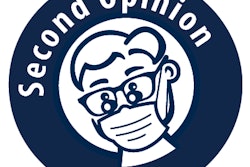
A questionnaire originally developed for patients with lower back pain may be able to help distinguish between different types of orofacial pain. Researchers found that higher scores on the painDETECT screening questionnaire were associated with neuropathic orofacial pain, as opposed to musculoskeletal or dental pain.
The researchers hope the questionnaire will help clinicians who are not pain experts to identify orofacial conditions that are neuropathic in origin. They published their findings in the Journal of Headache and Pain (November 6, 2018).
"Earlier recognition and distinction of the etiology of [orofacial pain] in patients is needed, particularly due to the substantial patient burden and interference with daily living that some diagnoses may have," wrote the authors, led by Daniyal Jafree, a medical and doctoral student at University College London.
Identifying the true nature of pain
The painDETECT questionnaire was originally developed in 2006 to help determine the primary cause of lower back pain. It has since been adapted for use for a variety of diseases and conditions, including arthritis, fibromyalgia, and malignancies. Therefore, the researchers were curious whether painDETECT could also help distinguish between orofacial pain that is primarily musculoskeletal, such as temporomandibular disorder (TMD), and pain that is neuropathic, such as trigeminal neuralgia or nerve injury after dental surgery.
For their study, they enrolled more than 250 patients at an academic facial pain center in London. All patients had been referred to the center by oral surgery specialists, primary care providers, or another orofacial pain clinic.
Researchers gave the participants a paper copy of the painDETECT questionnaire before their first appointment with a specialist. It included questions about the specific nature of each person's pain, such as whether it burns, prickles, or is sensitive to cold or heat. A score of 12 or lower indicates that the pain is unlikely to have a neuropathic component, while a score of 19 or higher indicates the pain is likely to have a neuropathic component.
The researchers found a significant difference in painDETECT scores between patients ultimately diagnosed with neuropathic pain versus non-neuropathic pain and mixed pain. A high score was also significantly associated with a secondary pain diagnosis.
However, the test only had an overall sensitivity (or true positive) rate of 60% and a specificity (or true negative) rate of 57% for orofacial pain, and it was particularly poor predicting orofacial pain that had a mixed origin.
"Together, these data suggest that the [painDETECT questionnaire] identifies neuropathic components when clear-cut, but, unsurprisingly, performs less well with a complex, mixed diagnosis, particularly when multiple diagnoses are present," the authors wrote.
Not ready for clinic use yet
The study had a number of shortcomings, including that the participants were patients in a secondary care center and are, therefore, not representative of those in other settings, such as dental and primary care clinics. In addition, only a few of the patients included in the questionnaire had acute dental pain, and the researchers were unable to account for the large portion of patients with secondary diagnoses.
One advantage of the painDETECT questionnaire is that it's quick and easy to use. However, it does not include questions related to specific face pain triggers, such as washing the face or cold wind, and the researchers wondered whether a more specific questionnaire could better identify the origin of orofacial pain.
"The [painDETECT questionnaire] performed modestly in our center given the complexity of presentation and as many patients have more than one coexisting diagnosis," the authors wrote. "Prior to clinical and further research applications, the [painDETECT questionnaire] must be adapted and revalidated for orofacial pain patients, and separately in primary care, where orofacial pain in less common."



















